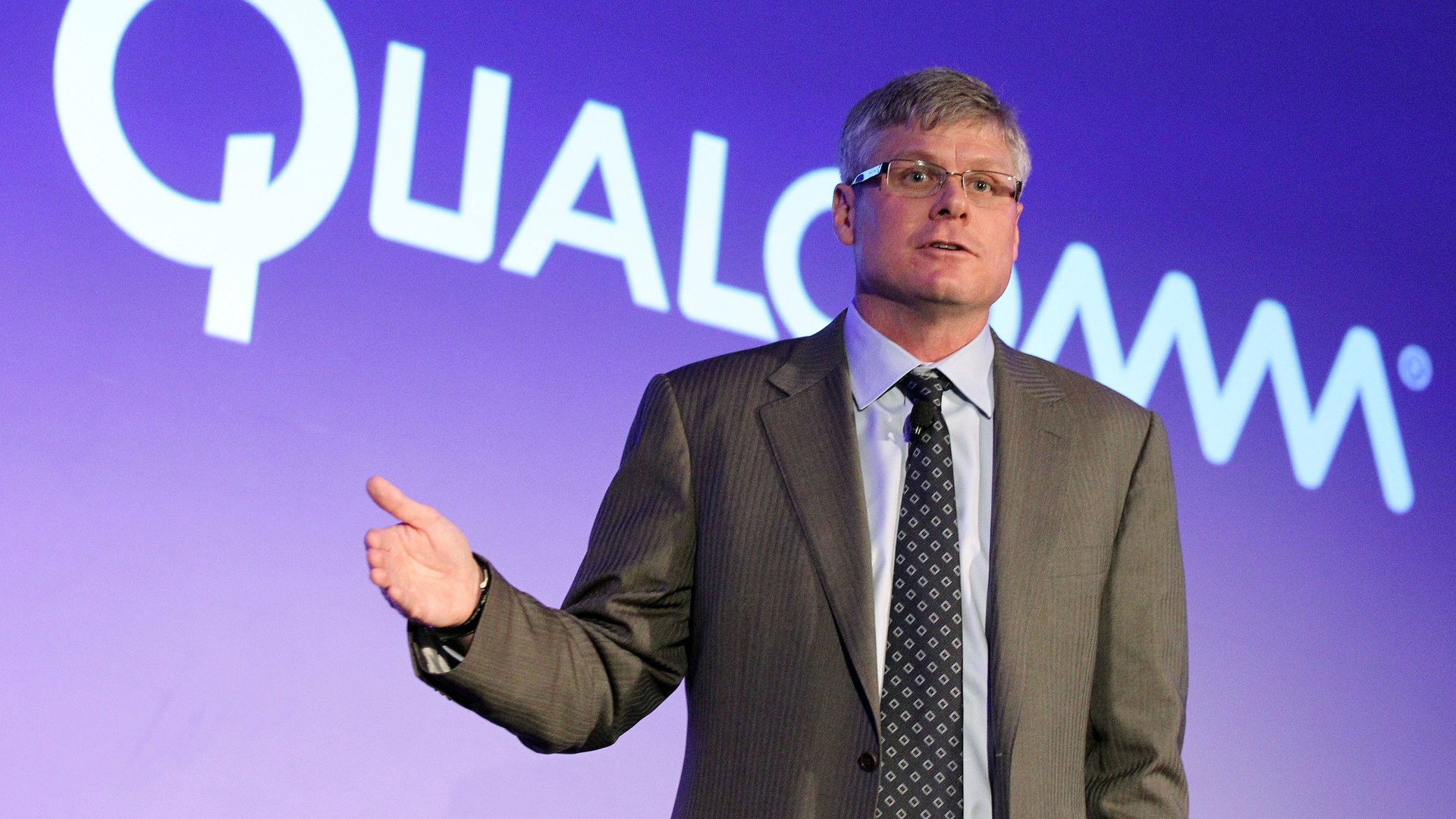Qualcomm’s latest smartphone chips keep it ahead of the pack
Building a smartphone once required armies of engineers who knew how to design wireless radios and processors and software developers who could write the grossly complicated code to make all those parts sing together.


Building a smartphone once required armies of engineers who knew how to design wireless radios and processors and software developers who could write the grossly complicated code to make all those parts sing together.
Then Qualcomm came along and introduced the world to “Snapdragon”—a so-called “system on a chip”—that includes everything needed to make a mobile phone except for the screen and software. Google solved the software problem with Android. And displays are easy to come by.
If you live outside of China, and don’t own an iPhone, there’s a high likelihood the device in your pocket has Qualcomm silicon inside. Whether you’re into Samsung’s premium Galaxy S5 or Motorola’s $130 Moto E, its vast product portfolio reaches nearly every budget.
Now, the company is introducing four new systems, called the Snapdragon 415, 425, 618, and 620. They all support more powerful 64-bit software, and they all connect to 4G LTE networks—the 425, 618, and 620 even support super-fast 300 megabit per second networks.
But what makes the 618 and 620 models noteworthy is that they’re built around ARM Holdings’ new Cortex A72, instead of a more in-house chip design.
Who’s ARM? PC buyers are familiar with Intel, a company that designs and manufactures chips. ARM takes a different approach. It licenses its processors and instruction set—the language the processor speaks—to other companies to integrate into their chips. Apple is one of those companies. Qualcomm used to do this, too. But recently it has decided to license ARM’s designs and focus on the other components of the chip, namely graphics horsepower and the various wireless radios.
By sticking to what it knows best, Qualcomm can rapidly iterate. This will prove to be important when wireless operators around the world start turning on faster, next generation LTE-Advanced networks.
Nothing is set in stone, though, and all of this can soon change. With Samsung’s upcoming Galaxy S6, reports say it’ll use a Samsung designed and manufactured chip because the Korean device maker wasn’t satisfied with Qualcomm’s offerings. Sony and HTC have toyed around with chips from a Taiwanese firm called MediaTek. LG’s already working on its own “NUCLUN” chip. And Intel tells Quartz we’ll hear about what it’s working on “soon.” (Perhaps next month at Mobile World Congress?)
All this is why Qualcomm is printing money, so much so that it’s been fined in China for abusing its market position. Regulators in South Korea are reportedly close to reaching the same conclusion. But if it’s putting out a superior product, should it be punished?